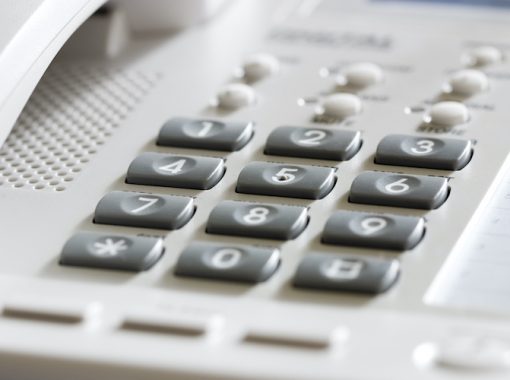
With AI chatbots, email, and direct messaging, one might think calling a company for customer service is a thing of the past. In reality, this is far from the truth.
Hubspot Research found that 48% of customers want to use the phone to communicate with a brand’s customer service team.
In addition to customer service, your company needs a phone system to communicate with vendors, partners, employees, and other individuals.
However, while obtaining a phone number is an incredibly easy process, brands must be diligent about the type of company phone number they select. With local and toll-free numbers available, it often leaves brands wondering which is best and which provides the right benefits for their company.
Each type of phone number has a purpose. The key is to decide which option works best for your business’s needs.
What’s the Difference Between a Local Number and a Toll-Free Number?
Before haphazardly selecting either a local number or a toll-free number and calling it a day, you need to know the difference between the two.
Local Phone Numbers
A local phone number uses a three-digit area code to specify a particular geographic region. These numbers are only available to individuals and businesses within those areas.
Toll-Free Phone Numbers
Toll-free phone numbers can be dialed from anywhere in the respective country with no charge to the caller. This allows long-distance customers to call a business without incurring the fees for such a call.
Toll-free phone numbers are indicated by the use of one of the following three-digit codes:
- 800
- 888
- 877
- 866
- 855
- 844
- 833
It is important to note that while all of these three-digit codes are linked to a toll-free number, they cannot be interchanged. For instance, you cannot call 800-555-5555 and expect to receive the same call destination as 888-555-5555.
Many businesses prefer to use vanity numbers, a type of toll-free number that provides the brand the opportunity to customize the digits. You’ll recognize popular vanity numbers from companies, such as 1-800-FLOWERS or 1-800-MATTRESS.
The Pros and Cons of Using a Local Phone Number
Local phone numbers are most commonly used by freelancers, small businesses, and local non-profit organizations. And for a good reason!
Local phone numbers offer the following benefits:
Pro: Local Phone Numbers Indicate That Your Business Operates Locally
It may seem like common sense, but the main purpose of a local phone number is to let clients and potential customers know that your business is close by. When customers see a familiar area code as part of your phone number, they’ll feel at ease knowing they’re supporting a local business or organization.
However, this benefit may also be a disadvantage for certain businesses. Those that operate larger businesses or want their business to appear larger will find that a local number can be a bit of a detriment.
Pro: More Than One Location? Use More Than One Local Number
If your business has more than one local location or several locations throughout a specific region, local phone numbers can help distinguish one location from the other. For instance, if you operate an office in New York as well as New Jersey, the different area codes would help customers identify which office they need to contact.
Of course, local phone numbers have their disadvantages too. These include:
Con: Long-Distance Call Fees
Local phone numbers are great for nearby customers. But if your business has customers from outside the region or country, they’ll likely be charged a long-distance fee to call your company.
In this situation, a toll-free number would be better suited for your business.
Con: Moving Locations? Time to Change Your Phone Number
If your company moves locations, you may need to change your phone number. However, for moves within the local area, you should be able to retain the phone number.
But, this change in phone number affects more than your staff. Your company now needs to update marketing materials, online listings, social media pages, business cards, and so much more with a new phone number. And this is all on top of notifying customers of the change!
The Pros and Cons of Using a Toll-Free Phone Number
If a local phone number doesn’t sound like it’d be worthwhile for your business, opt for a toll-free number.
Toll-free numbers offer benefits, such as:
Pro: Free for Customers to Dial
The advantage is in the name! Customers can call your business without the fear of being charged a long-distance fee.
Restrictions do apply for international callers, but the majority of your customers will be just fine to ring your business for free.
Pro: Vanity Numbers Increase Customer Retention and Recall
Businesses that leverage a toll-free vanity phone number experience increased customer retention and recall as a result of the easy-to-remember phone number.
And, the majority of consumers associate 1-800 vanity numbers with a reputable business. Add in some top-notch customer service to the mix, and you’ve got yourself a bunch of loyal customers, all from using a toll-free vanity number.
Pro: Branding Opportunities
Businesses looking to increase their exposure and awareness beyond the local market can leverage vanity numbers as branding opportunities.
While many companies opt to put the brand right in the phone number, others use the phone number as part of their marketing efforts. For instance, some businesses even turn their toll-free number into a catchy jingle.
Pro: Call Tracking Capabilities
Arguably the biggest benefit to using a toll-free number is the ability to leverage call tracking features.
Call tracking features allow you to monitor data points, such as:
- The geographic location of the call
- Which marketing channel generated the call
- How long the call lasted
- Which customer service representative answered the call
- The context of the phone call via the notes feature
Businesses of all sizes use call tracking to monitor the success of online and offline advertising and customer service activities.
For instance, if you create a print flyer for an upcoming promotion, you can generate a specific toll-free number solely for use on that flyer. If a call comes in from that toll-free number, you know exactly how the caller found out about your business.
Pro: Monitoring Marketing Progress
Through these call tracking features, businesses with toll-free numbers can monitor and calculate the true success or return of a marketing initiative.
Marketing software and tools display the results of all online activities. But what about customers who saw an online ad and decided to call the company instead? Without tracking offline leads, your marketing campaign data is never quite accurate.
Plus, there’s data to prove the benefits of tracking calls generated from online campaigns! Google reported that mobile searchers are 39% more likely to call a business. Similarly, BIA/Kelsey estimates that calls from mobile searches are up 113% since 2014.
Imagine not including those calls in your marketing results. An online campaign could have been driving a significant amount of phone leads to your business while failing miserably in online engagement.
Pro: Ideal for Businesses Without a Physical Location
Perhaps your business operates out of your home via your smartphone or your home phone. But you don’t want to plaster your personal phone number all over the internet, do you? (You don’t.)
Instead, you can select a toll-free phone number and port it to your cell phone. It’s that simple! This tactic retains your privacy while giving your business the appearance of a multi-location operation.
Or, you may be a digital nomad operating a business on the go. In that case, a toll-free number allows you to run your business from wherever you may be without the need for a physical location or local phone number tied to said location.
Pro: Portability
Businesses with multiple sales reps, locations, or marketing campaigns love the ability to port toll-free phone numbers to any phone line. From smartphones to cloud-based internal phone systems, you can select where you want to receive calls from your toll-free phone number.
This is perfect for businesses with staff constantly out of the office or those with a dedicated customer service team.
Con: Less Personal Than a Local Number
While most consumers believe businesses with toll-free numbers are more credible, others may consider a toll-free number to be less personal than a local number. Business owners will have to review their audience to determine if this disadvantage is likely to happen.
Con: Outbound Calls Can Appear as Spam
If placing an outbound customer call with your toll-free number, it may appear as spam on their phone. Since people rarely answer calls listed as spam, this smartphone security feature may cause your sales team to lose a few leads.
Why Not Use Both Phone Numbers?
While toll-free numbers and local phone numbers each have advantages and disadvantages, no one said you couldn’t use both!
Having a local line and a toll-free number accommodates customers in all locations, provides a wealth of marketing opportunities, and positions your business as a leader in your local and industry communities.
Sign up for a toll-free number and use it in combination with a local phone number today.











